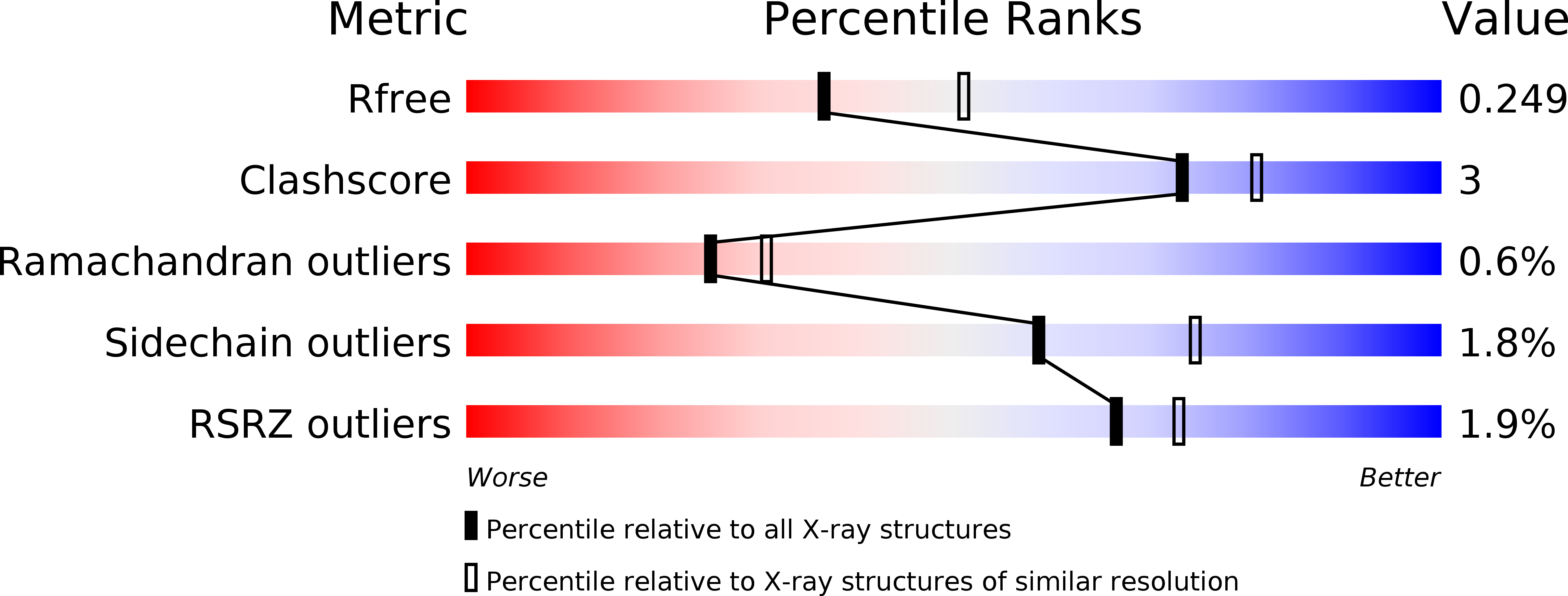Salmonella Effectors SseK1 and SseK3 Target Death Domain Proteins in the TNF and TRAIL Signaling Pathways.
Newson, J.P.M., Scott, N.E., Yeuk Wah Chung, I., Wong Fok Lung, T., Giogha, C., Gan, J., Wang, N., Strugnell, R.A., Brown, N.F., Cygler, M., Pearson, J.S., Hartland, E.L.(2019) Mol Cell Proteomics 18: 1138-1156
- PubMed: 30902834
- DOI: https://doi.org/10.1074/mcp.RA118.001093
- Primary Citation of Related Structures:
6CGI, 6DUS - PubMed Abstract:
Strains of Salmonella utilize two distinct type three secretion systems to deliver effector proteins directly into host cells. The Salmonella effectors SseK1 and SseK3 are arginine glycosyltransferases that modify mammalian death domain containing proteins with N -acetyl glucosamine (GlcNAc) when overexpressed ectopically or as recombinant protein fusions. Here, we combined Arg-GlcNAc glycopeptide immunoprecipitation and mass spectrometry to identify host proteins GlcNAcylated by endogenous levels of SseK1 and SseK3 during Salmonella infection. We observed that SseK1 modified the mammalian signaling protein TRADD, but not FADD as previously reported. Overexpression of SseK1 greatly broadened substrate specificity, whereas ectopic co-expression of SseK1 and TRADD increased the range of modified arginine residues within the death domain of TRADD. In contrast, endogenous levels of SseK3 resulted in modification of the death domains of receptors of the mammalian TNF superfamily, TNFR1 and TRAILR, at residues Arg 376 and Arg 293 respectively. Structural studies on SseK3 showed that the enzyme displays a classic GT-A glycosyltransferase fold and binds UDP-GlcNAc in a narrow and deep cleft with the GlcNAc facing the surface. Together our data suggest that salmonellae carrying sseK1 and sseK3 employ the glycosyltransferase effectors to antagonise different components of death receptor signaling.
Organizational Affiliation:
From the ‡Department of Microbiology and Immunology, University of Melbourne at the Peter Doherty Institute for Infection and Immunity, Melbourne, Victoria, Australia.















